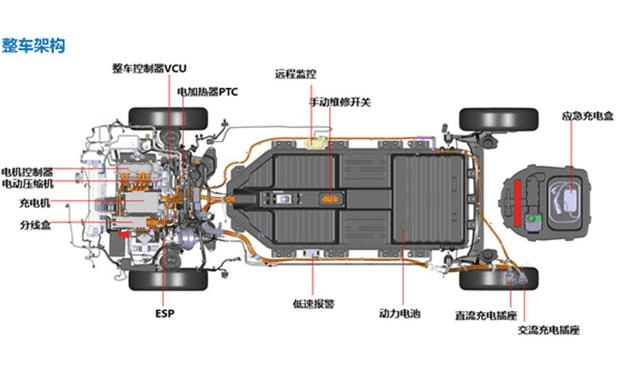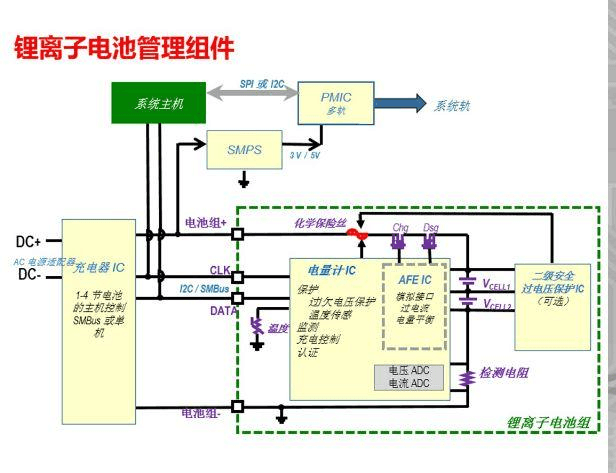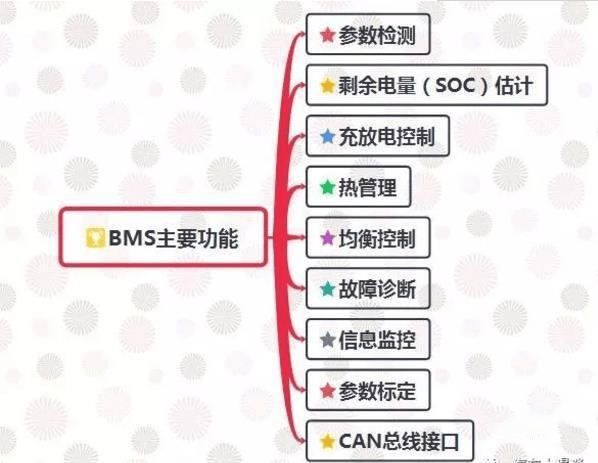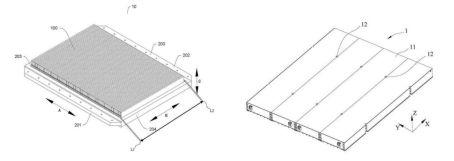Power batteries are the power source of new energy vehicles. Power batteries are mainly divided into battery packs, modules, and battery cells.

Deep analysis of new energy vehicle power battery structure technology
1 battery pack
Battery packs are generally composed of battery modules, thermal management systems, battery management systems (BMS), and electrical systems and structural parts.


2 module
The battery module can be understood as a combination of lithium -ion battles through stringing and connecting, and the battery cells and PACK intermediate products formed after monitoring and management devices for monitoring and management devices are installed. Its structure must support, fix and protect the battery cells. Its basic composition includes: module control (commonly said BMS slave board), battery single, conductive connecting parts, plastic framework, cold plate, cooling pipes, two ends, and a set of fasteners combining these components together to combine these components together Essence In addition to gathered the single cells at both ends, in addition to providing a certain pressure, the module’s fixed structure in the battery pack is often designed on it.

The design of the module is to facilitate BMS for battery management, improve battery safety, and facilitate maintenance and maintenance. Just like a country needs to be divided into several provinces to facilitate governance.
The module composition is as shown below.


3 battery cells
The cell is mainly composed of positive electrode, negative electrode, diaphragm and electrolyte. The main working principle is to achieve charging and discharge by the migration between the lithium ion between the positive and negative electrodes. The charging process requires external energy, that is, power grid power, which is equivalent to storing the power of the power grid in the battery; the discharge process can be spontaneously completed, and this process releases the stored energy.


Lithium tram batteries are mainly divided into three categories according to the material system: lithium manganate, ternary material lithium battery, and lithium iron lithium. These three types of battery performance have their own advantages and disadvantages, and they also have different applications in the market. Comparison of the characteristics of the three types of lithium battery materials, the lowest price of lithium manganate is the lowest.

From the above table, it can be seen that the price of lithium manganate is the lowest at the lowest, 50-60,000 yuan per ton. Essence The price of the three yuan material lithium battery material is 160,000 to 200,000 yuan per ton. The storage performance is the best. The monthly attenuation is 1-2%, and the battery cycle life is ≥600 times. The price of lithium lithium lithium lithium is 15-18 million yuan per ton, and the battery cycle life is best to perform ≥1500 times. The storage performance is medium among the three, and the monthly attenuation is 3%.
The value mentioned in the table above is a hard parameter for the performance of the three types of lithium batteries. The safety, stability, and low temperature resistance of lithium battery are also important indicators to comprehensively judge the performance of lithium battery.
Lithium manganate: high temperature performance, circulation performance, storage performance is poor, manganese is easy to break down under high temperature conditions, and the service life of the battery pack is not easy to store.

Material lithium battery:
High and low temperature, circulation, safety, storage and electricity performance are relatively average. The volume is higher than energy, the material price is moderate and the performance is stable. The ternary material cells have a series of systems such as 532,811 according to the proportion of nickel cobalt manganese. In recent years, the battery cells of the 811 system are relatively hot. The higher the ratio of nickel, the more unstable the power battery. At the same time, increasing the proportion of nickels can increase the energy density of the battery. Therefore, the design of power batteries is a balanced process, balanced practicality and safety.
Lithium iron phosphate:
Good safety performance, low conductivity, lower volume than energy, high material cost, poor low temperature performance, and cannot meet the use of electric vehicles in winter.
The positive electrode of the lithium battery is to coat the positive electrode material (such as LFP, NCM) on aluminum foil (collecting flow), and the negative electrode is to apply the negative electrode material (such as graphite, LTO) to copper foil (set flow). Under normal circumstances, the battery is named according to the positive material, so it is generally called a ternary battery or a lithium iron phosphate battery; the LTO in the lithium titanate battery is a negative electrode material, so this is a special case named after the negative electrode material. When reading foreign literature, I found that the positive pole material is often called cathode in the text, and the negative electrode material is called anode. It did not understand it at the beginning, because we generally believe that the electrode of the reaction reaction is cathode, which occurs. The electrode of the oxidation reaction is anode; the battery is also changing during the process of discharge and charging switching. Later, I slowly wanted to understand that this definition should refer to the situation under the condition of no external energy impact, so the reaction situation in the discharge state determines the yin and theodon poles of the battery.
The attenuation of the battery can be divided into two aspects of analysis. On the one hand, it is performance, and on the other hand, it is safe.
1) Performance attenuation
After a certain period of time, the client mileage of electric vehicles will decline, and the attenuation of accelerated performance may also be felt. This can be analyzed from several aspects of capacity attenuation, increased internal resistance, and increased battery self -discharge.
2) Safety attenuation
The attenuation of safety is relatively difficult to detect. It is possible that the battery has developed mechanical deformation, or the probability of short -circuit internal short circuit has increased, and the risk of leakage is there.
Therefore, we can find what influenced the capacity, what factors caused by increased internal resistance, the process of battery shape change, and the factors that cause short circuits to understand the battery attenuation process.
In terms of safety, lithium manganate batteries are much better than the safety of three yuan batteries. For example, in China, a 90-way monomer battery made by manufacturers in China can pass all the safety tests of 201 in 201. In terms of Sanyuan materials, it is possible that the domestic 20 -time monomer may not be able to pass acupuncture inspection. This is mainly determined by the stability of the material structure. The structure of lithium manganate itself is stable than the three yuan material. In addition, the development time of lithium manganate has a relatively long development time and a much higher maturity. The new LMA-30 mentioned earlier is lithium manganate with AL. roll out. In addition, due to the matching problem of electrolytes, the ternary is more likely to produce gas than lithium manganate, which is also a reason that the safety of ternary batteries is not as good as lithium manganate. However, the energy density of ternary materials is much higher than lithium manganate. So nowadays, Japan or South Korea, the most mature power products are mainly lithium manganate, mixed three yuan together, which not only guarantees safety, but also improves energy density. This is also a trend of power development in the future. Essence
The battery cells are divided into cylindrical cells, soft bag cells, and square cells according to different structures.
Square cell


Cylindrical cell
Typical cylindrical cell structures include: positive poles, negative poles, diaphragm, electrolyte, shell, cover/orthopedic hat, pad, safety valve, etc. The cylindrical cells are generally used as the battery positive, so the shell is the battery negative electrode.
The standardization of cylindrical cells is relatively high, and the common models are: 14650, 14500 (battery No. 5), 18650, 21700, etc. The first two digits of the model represent the diameter of the cylindrical cell (unit MM), the 3rd and 4th digits represent the height (unit MM) of the cylindrical cell, and 0 refers to the cylindrical. The cylindrical batteries used by Tesla are 18650 and 21700, and there will be 4680 (a higher waist -thicker battery) in the future.

Soft bag cell

Three batteries comparison, each with advantages. Combined with the convenience of production technology, domestic electric vehicles are mainly used for square batteries. Tesla electric vehicle is a cylindrical cell.

4 Battery Management System (BMS)
BMS English name BatteryManagement System, the Chinese name power battery management system, monitor and manage the battery, through the collection and calculation of voltage, current, temperature, and SOC to control the battery charging process to achieve the protection of the battery protection. The management system for improving the comprehensive battery performance is an important link to connect vehicle power batteries and electric vehicles.
There are three main types of BMS (battery management system) functions: by measuring the load state of the power battery, providing the driver with the remaining electricity to remind the driver to charge the electric battery in time; secondly Detect the temperature of the battery work and use a splitter or heat sink to ensure that the battery work is in the best state; finally, the battery is balanced management. In the case, the battery voltage and remaining power are detected to prevent excessive charging.
During the BMS development process, the harm analysis of BMS has overwhelmed (overcharge), under pressure, excessive and overcurrent and other harmful events. For example, over -pressure may be a more serious event, especially for a long time to charge the battery, which will cause the battery to cause the battery to cause it will cause the battery to cause Battery performance decreases and cannot be recovered, and even causes the battery deformation and leakage. Then, the goal of the security design of the BMS system is to be able to discover the battery overcharge in time, and through reasonable harm analysis and evaluation, consider the design security mechanism from the aspects of single -point failure and potential failure, and finally make appropriate and timely processing.


5 Battery development trend
5.1 Cobalt -free battery
The full name of the ternary lithium battery is called “three -yuan polymer lithium battery”, which refers to the lithium battery of the ternary positive pole material of the nickel cobalt lithium manganate (NCM) or the lithium nickel cobalt aluminate (NCA), which is mainly used for Stable material layer -like structure, cobalt elements that improve material circulation and multiplier performance, the public account power battery BMS is an indispensable precious metal in the ternary battery.
For a long time, the price fluctuations of cobalt have greatly affected the price of ternary materials. However, more than half of the world’s cobalt is produced from Congo (gold). Vulnerability. Since this year, with the continuous deterioration of the overseas epidemic, the blockade measures of the Congo and the social turbulent situation have exacerbated concerns about cobalt ore production. At the same time, the border blockade policy of Zambia, South Africa and other countries restricts the transportation of cobalt raw materials. (Gold) and South Africa’s cobalt raw materials will decline significantly, which will adversely affect the import of cobalt raw materials in the third quarter.

The cost problem has always been a stumbling block for the development of the new energy vehicle market. The “power battery”, as the core cost, has always been described as hoping to reduce the cost as soon as possible. After reducing the ratio and content of cobalt, the three -yuan lithium battery will reduce the cost of the entire vehicle accordingly. The impact of cobalt price fluctuations on enterprises will also be weakened, and “忐” companies will begin to become active as passive, which will help promote the development of the new energy vehicle market.
The picture below shows the cobalt -free battery:

5.2 Solid -state battery
Solid -state battery is a battery technology. Unlike the lithium -ion batteries and lithium ion polymer batteries commonly used today, solid -state batteries are a battery that uses solid electrodes and solid electrolytes.
As the scientific community believes that lithium -ion batteries have reached the limit, solid -state batteries have been regarded as batteries that can inherit the status of lithium -ion battery in recent years. Solid -state lithium battery technology is made of glass compounds made of lithium and sodium as transmission substances, replacing the electrolytes of lithium batteries in the past, greatly improving the energy density of lithium batteries.
The solid electrolyte has a high electrochemical stabilization window, which can be used with high -voltage electrode materials to improve the energy density of the battery; the solid electrolyte has high mechanical strength, and is willing to effectively suppress the piercer of lithium branches during the battery cycle. Try to try it. Metal lithium with high theoretical energy density as a negative electrode material has become a disadvantage of solid electrolytes (problems encountered at this stage): ultra -high solid contact impedance between electrodes and electrolytes.

5.3 blade battery
The blade battery is a brand -new design concept. While using a long battery core, it saves the intermediate module link and directly install the battery system into the battery system. Such weight and cost are effective, which is similar to that of the Ningde era. At the same time, BYD’s battery structure design borrows the principle of honeycomb aluminum plates. The battery cells are fixed between two layers of aluminum plates by structural glue, so that the battery cell itself acts as a structural part to increase the strength of the entire system.

5.4 Folding process
The folding process is to cut the positive and negative electrodes into small pieces and the isolation membrane to synthesize the small battery cell monomer, and then stack the small cell monomer and connect to form a LI ion cell manufacturing process of a large battery cell.
For example, the soft -pack lithium battery is “stack”, such as “Z” -shaped stack, first cut the positive and negative electrode ingredients into a rectangular pole sheet of the same size, and then stack it on the septum separately, and the diaphragm “Z” shaped through the shape of the form. In the meantime, the two poles are separated, and the aluminum -plastic packaging is packed in the end.
The process of stacking is cumbersome, mainly cutting into pieces with diaphragm. However, the passing rate of the polar section is low, the quality (section, burrs, etc.) is difficult to maintain high consistency, and the alignment accuracy is insufficient. This is also the main reason why stack batteries are not popular.


5.5 CTP/CTC
The CTP technology is all called Cell to Pack. By canceling the module design, the battery pack is directly set into a battery pack. The battery pack is integrated as part of the vehicle structure parts on the body floor.
This method reduces the side plates, end plates (module structure parts) of the module itself, and materials such as beams, longitudinal beams (battery packaging support structures) that are originally used to separate modules and help the module connection. Great simplification, the use of space is released, the battery capacity of the same size is expanded, and the quality of the battery pack has been reduced, thereby bringing the battery energy density increase and cost reduction.
CTP technology has two different routes. The first is to completely cancel the module scheme, represented by BYD blade batteries; the second is the plan for small modules as a large module, and represented by the Ningde Times CTP technology

BYD blade battery vs Ningde Times CTP
CTC technology is all called Cell to Chassis. Zeng Yuqun, chairman of Ningde Times, introduced it like this at the China Automobile Blue Book Forum: “This technology integrates the battery and chassis, and then the motor, electrical control, and high voltage of the vehicle are DC/ DC, OBC, etc. are integrated through innovative architecture, and the power distribution and energy consumption can be optimized through intelligent power domain controller. CTC will make the cost of new energy vehicles competing directly with fuel vehicles. Good. “
In a sense, CTC can be understood as a further extension of CTP. The core is to save the module and packaging process, and integrate the cells directly to the car chassis to achieve a higher degree of integration.

Traditional technology vs CTP vs CTC
The emergence of CTC will break through the restrictions of PACK and directly involve the car chassis. This is the most critical core component of the vehicle. It is the core advantage that the vehicle manufacturer has accumulated for a long time. of. So now some battery suppliers have begun to plan chassis development.
Tesla showed 4680 Structural Battery (CTC) scheme-46680 battery packs to cancel the module design in the Giga Fest event held by the Berlin factory last year. With two functions of the body floor, the seat can be installed directly on the battery pack.



